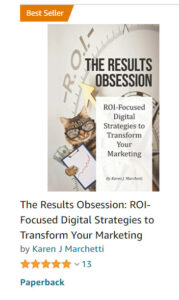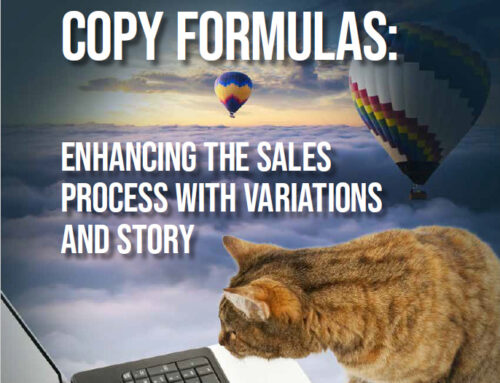Headlines usually determine whether your web page, direct mail, print ad or email message will be a success or not.
It’s the headline that either draws the reader into the copy — or doesn’t give the reader a reason to read further.
Why are some headlines less than effective — while others totally grab the audience? Headlines play critical roles in the results of your marketing efforts:
- In Email — the Subject Line needs to get the email opened. The headline at the top of the email message needs to draw the recipient into the copy.
- In Direct Mail — the headline on the envelope or mailer address panel needs to get the mailer opened. The headline at the top of the sales letter or inside the mailer needs to draw the reader into the copy.
- In a Magazine or Newspaper Ad — the headline has to stop the reader from turning the page, and draw the reader into the copy
- On a Web Page — the headline has to draw the reader into the page.
So headlines are there to draw your reader in.
How can you recognize a headline that effectively draws your reader in?
Use these 6 simple steps:
1. “So What?”
If you read a headline and are inclined to say, “so what?” that’s likely a sign that the headline is weak. Why are some headlines “so what” headlines? They tend to be too general, less benefit-oriented. They tend to not hit the emotional hot buttons of the target audience.
Sometimes, the headline talks to the company, rather than the audience. (Headlines that use “we” tend to do that.) Typically, the more specific you can make your headline, and the more you can make your target audience say, “Yeah, that’s me”, the more effective your headline.
2. What’s in it for me?
Headlines that give the reader a good reason to read further — by telling them what benefit they’ll enjoy — are usually good headlines. Your audience doesn’t really care about your company or your product — they only care about what it does for them. Don’t make your audience work to figure out why they should care about what you’re selling. Make it crystal clear about “what’s in it for me?”
3. YOU and Your
In addition to focusing on the benefits to your target audience, good headlines talk directly TO the audience. Headlines that use “you” or “your” or that begin with a verb (where the “you” is implied) are strongest.
Talk directly to your audience by addressing them as you would face-to-face. “ You’ll cut your time in half . . .”
4. Specifics sell
The more specific you can be about the benefit your product or service delivers, the stronger your headline. What does that mean in practice? Include specific numbers to add credibility. Or use very specific details.
When McDonald’s launched the Big Mac in the 70s, a highly specific jingle was used throughout the advertising. McDonald’s could have launched the product by saying, “lots of good stuff in this burger” — a shorter, more general, less involving statement. Instead, it used memorable specifics that most Baby Boomers can still remember word-for-word: “two all beef patties, special sauce, lettuce, cheese, pickles, onions on a sesame seed bun.”
5. Get to the point
Don’t make the reader guess what you’re selling. Don’t try to be cute with your headline — most readers won’t spend the time to figure out what you mean or why they should care.
Some writers bury the most important points deep in a paragraph somewhere. Your headline is the most important copy on the page — use it to deliver the most important information. Because if I don’t see a benefit in your headline, I’m not likely to read your copy to look for it.
So banish from your website page headlines that read, “Solutions” or something equally useless. Use your headline to give the visitor a reason to read your copy. Your headline is an introduction to the page — tell me enough so I know what I might find there.
6. Enhance your brand image
Your headline should fit in with the overall brand image of your company. Lexus once ran a magazine ad with the headline, “Does your car fall apart this well?” Huh? Is that an appropriate image for a luxury brand? (I saw the ad once, and perhaps that’s the only time it ran . . .).
This was Part 2 of 3: Copywriting that Sells! How to Recognize it, Write it, Test it . . . See Part 1: 4 Tests of Website Copy that Sells
Next Time: Part 3 — Does Your Website Copy Really Sell?
 Excerpted from our new BEST SELLER, “The Results Obsession: ROI-Focused Digital Strategies to Transform Your Marketing” now available on Amazon!
Excerpted from our new BEST SELLER, “The Results Obsession: ROI-Focused Digital Strategies to Transform Your Marketing” now available on Amazon!
Learn more about The Results Obsession and see the Table of Contents
The book includes 6 copywriting chapters:
- Messaging Strategy for Copy that Sells (copy approaches, emotional drivers)
- Great Copy: How to Recognize, Write, and Refine It (writing headlines, engaging leads, and copy that follows the sales process)
- Crafting Great Copy: Part 2 (all the wordsmithing details to craft the best copy of your life)
- Website Content Strategy and Offers
- Website Copy that Sells
- High Impact Email Strategies
- Creating Email to Drive Leads and Sales






[…] Previous […]